A full moon is associated with a wide array of events: disturbing our sleep, benefiting crops or even facilitating a séance.
Due to a fortunate coincidence this year, the Rokolectiv electronic music and art festival seems to have benefited from this lunar tutelage.
Mircea Eliade describes our behavior during this period as ”moonstruck” – as if the celestial body is sending off rays clouding our judgment and creating a state of natural high, making us more attuned to the mystical. My yoga teacher said that during a full moon our body receives a confidence boost, making us more eager to push our limits during practice. Of course, she was simply warning us not to strain a muscle.
Yet these influences seemed well present during the festival this year, both in terms of the spiritual and physical endurance, for this year’s festival has been a continuous ritual dance in honor of the techno goddess.
In 2016, this new age of techno that has taken over the world would be best portrayed as a futuristic, Yoshimoto-clad goddess, dressed in full black and metallic avant-garde active wear, sporting a blade runner haircut and totemic jewelry. Much like the young kids you see dancing at every other party, with their 90s windbreakers, round glasses, architectural Nikes and Tumblr sheen – a vital segment against the standardization of the dance floor, be it in Berlin, Bucharest, Amsterdam or Paris.
Their Instagrammed look might seem cliché, but it feels like the sort of Internet ubiquity millennials are trying to achieve IRL, teleported from a computer screen into clubs, with a sort of cyberpunk dissidence. They’ve become a familiar form of alterity that I’m always happy to spot at parties, neutralizing the bro-types that keep infiltrating even the most well-guarded underground clubs (thank you, presale tickets). And with the rising interest in female and female-identified DJs and producers in the last year, it’s not hard to see why Rokolectiv made a statement this year in choosing to level the playfield with a deliberately gender-balanced lineup.
With some of the hottest techno coming from the likes of Avalon Emerson and Lena Willikens, we’re witnessing the rise of a new era and hopefully the age of matriarchy in the 4/4 kingdom. Not to mention the efforts of groups and individuals such as female:pressure, a platform for promoting female-identified artists that has been active for over 10 years, DJ collective Discwoman organizing parties for the gender-marginalized and DJs such as The Black Madonna, advocating for more female exposure on every media and using her own programming for Smartbar in Chicago for that purpose.
For 13 years now, Rokolectiv, the brainchild of Cosmin Tapu and Mihaela Vasile, has been the go-to festival in Bucharest, importing the latest weirdness to our slightly isolated capital. It has played a crucial role in the local scene, contributing to the musical mind-expansion. I remember my first edition, with Planningtorock doing a powerful set at MNAC and the haunting masked performance of Underground Resistance at Club Session.
Rokolectiv were also the first to bring us our first instances of sound art; one of the most memorable were those musical plants in the basement of The Ark.
Despite its widely-recognized influence, there are many forms of criticism directed towards them, most recently people saying the festival has lost its edge. It’s understandable to see how they might think that way, watching the festival move from experimental sets by the likes of MOHA and Christian Fennesz in 2009 and Terre Thaemlitz lectures in 2010 to a mostly club-oriented line up in 2016.
Although, I wouldn’t say that the experimental music+ art show/workshops/lectures+ club nights recipe was really what made the festival so special. Even back in 2008, Belgrade had a similar formula with the Dis-Patch festival. Just last year, the 100-hour party experiment Interval felt more like a conceptual art project than Rokolectiv.
If you were to give one thing to the festival, it would be its incredible capacity of having built a sense of community over the years. The cool Bucharest crowd still attends the festival every year with the same religious fervor as their parents going to Easter mass.
Rokolectiv is a highly social affair, which also brings a sort of underlying, interesting tension between the various groups.
Given all this context, it’s hard to say that Rokolectiv lost its touch. Their so-called edge was never in their formula; what sets Rokolectiv apart and makes it so important for the local scene is Cosmin and Mihaela’s sense for the now. If you will, they’re like truffle hounds for the cool.
Regardless of their musical direction of choice, Rokolectiv does sound very much like the now; it has a sort of freshness that keeps them relevant, year after year. At the last Queer Night in Control, someone described Borusiade’s set as ”sounding like the future”. No wonder she’s a Rokolectiv alumni.
Back to 2016, the festival might seem less adventurous, but is no less relevant. It somehow always managed to be in synch with other underground festivals. Last year , for example, Islam Chipsy played Sonic Protest (the experimental festival in Paris), weeks before Rokolectiv and Lena Willikens took the early morning crowd into the trippiest after party musical journey in Bucharest, just to mesmerize the open field at Vilette Sonique a month later.
In 2012, the festival had the genius idea of transforming their opening night into a free attendance event . Of course, there is still yet to see how many new people will open up to experimental music thanks to this, but in a context such as Romania, one can only hope that things would get better by educating audiences.
On Thursday, at 8.20 pm, the line to get into the Museum of Contemporary Art spread across three flights of stairs.There were familiar faces and whispers of Prince’s death. Entering the space after a thorough airport security check, the ground floor had been transformed into some sort of decadent club, with ridiculously high ceilings.The sound system dominated the stage, just like in the previous year. In the neighboring room, two voodoo-Satanist versions of the car dealership inflatable men were whooshing into an epileptic air fight. Konrad Smolenski’s Dizzy Spells was certainly a more inspired choice than the gigantic Nuvaring they had in there last year.
As the crowd was still pouring in, the line now going around the block, Native Instrument opened the evening. Facing each other across a small table filled with pedals and tiny mixers, Stine Janvin Motland and Felicity Mangan began their Attenborough-inspired musical journey on a backdrop of venomous tropical frogs and pink finger-shadow animals. Sounds of thunderous birds and robotic crickets began rising from the speakers, followed by saturnine night owls and vaporwave tigers, oscillating between binary palm leaves into a sort of underwater dub-techno trance.
The ladies continued this repetitive tribal roughness for a good 45 minutes.
I’ve seen Stine perform before, in a minuscule gallery in Paris, about three years ago; she only had a microphone and a delay pedal, but her use of this rudimentary setup was quite breathtaking. She transformed her voice into beasts and doves and alien creatures.
While this new project was still intriguing, it felt like her solo rawness was overshadowed by the added production elements.They sure did inhabit the overwhelmingly space quite comfortably, but you could also sense that the Berlin spirit was rubbing off on her.
Peder Mannerfield’s extended set was a bit of a letdown; the most exciting thing was probably this 4 year old girl in a sea foam ballerina tutu prancing behind a speaker tower; I don’t know if Berghain has a techno kindergarten, but seeing this little lady take to the floor made me think they should.
The true revelation of the evening was the Italian duo Primitive Art, whose Hundebiss pedigree had already peaked my interest; and, indeed, they were a true force of nature with Matteo making beats behind a gaffer-tapped Mac and Jim hyping up the crowd, sing-screaming and turning on a weird rotating electronic device.
You could tell the crowd had been aching to dance all night, hungrily busting a move around every beat. This was raw, hypnotic, tribal dubbyness, with a taste of techno and a very punk/bad boy attitude. Some kid with Botticelli curls was the first to start off the dancing, voguing in front of the seated crowd since the previous act. Another skater–type with a lion’s mane started head banging and shedding layers. The rest of the crowd followed in frenetic unison.
The air was electric,as if a revolution was about to take place; something which was as now as it was universal.The sort of beat you could feel in your guts.
The museum staff was starting to panic; you could see them walking around impatiently, closing off the access to the installation and purposely looking at their watches. The crowd was getting wild. A man in a uniform started arguing with the organizers, pointing repeatedly at his wrist. When the band decided to give the overheated crowd an encore, the museum staff turned on all the lights, in an attempt to facilitate the ending of the party. The crowd was quickly encouraged to evacuate the premises by the overzealous guards.
After the show, Mihaela was complaining by this slightly violent end of the evening. They’ve been collaborating with the museum since the beginning of the festival. They certainly helped put the institution on the map, bringing in more than just the few art school kids. But unfortunately the relationship has gotten more and more tense, with the museum being overly difficult, forcing them to look into other venues. Yet the MNAC is such an integral part of the Rokolectiv experience that I wouldn’t be able to picture the festival without it.
Due to the post-Colectiv witch hunt, Rokolectiv’s annual quest for alternative venues went on halt; the festival retreated to Club Control, a sort of Noah’s ark during these challenging times of draconic government security measures. Despite this setback, the biggest surprise of the festival was the underground installation room which, in an unintentionally ironic fashion, looked like it probably defied even the most basic ISU regulations. I almost enjoyed exploring this underbelly of the club more than the art itself; the best part about it was probably it’s hidden status – for a regular to discover a new crevice in the Control conglomerate was an exciting experience.
Right at the entrance towards the terrace, in a space usually occupied by the bouncers, there was a massive door that lead to an underground space; a lovely young lady acted as the gatekeeper, making sure no more than 10 people were down at one time. This club within a club experience was already thrilling! Going down some very steep and slippery stairs that had a railing in the middle, you entered an underground space that felt like the bathroom of a haunted hospital: the walls were moldy, the white tiling was peeling off and an array of piping and spider webs extended over our heads.
Bathed in red light, Daniel Neubacher’s forced_feedback, a possessed Nintendo console cluster, looked like a bug invasion tied down for an exorcism that had already started. Their spazzy movements were both comical and unsettling.
Continuing down the narrow and dimly-lit corridor, a small enclave lead to a small video projection. I can’t say I was very impressed by the voice-overed found footage drone story, which felt like overly pretentious videos that art school colleagues make – adding philosophy to something from popular culture in order to seem edgy.
The underground journey stopped at a Tastemakers sign; this lead to another room where one of those cigarette-girl Amazonians in space age dresses and tall boots was managing the interactive piece. A couple of crooked neon lights were hanging from the ceiling. The air looked slightly smoky. Another Tastemakers light box inside. The corporate sponsorship was blending into the art piece. Three chairs on a revolving platform had people with Oculus devices on, while a creepy, IDM Dungeons and Dragons music was playing. I waited for my turn for the VR experience. The spinning was certainly enjoyable, but the wannabe surreal future-Goth imagery fell pretty flat. Watching the people spinning in this dungeon was far more entertaining. That may not have been the intention behind Virtualia Dyungeon, but at least the piece worked on some level.
I was almost sad to leave this run down space which heralded the sort of 90s Berlin rave risqué factor. It made for a hell of an exhibition space.
Navigating back into the club through the sea of people smoking out on the terrace, I ran back to the main room, not to miss Ninos du Brasil’s set. Instead, there was still that ravy ironic dnb guy playing something loud and bassy with some Jamaican voiceover. The crowd was patchy and the small room empty.
Shortly after, the Brazil boys made their entrance, wearing Christmas-garland lame face masks and banging their drums. It was just two guys with drums, but they had some serious chutzpah. They were playing some sort of futuristic punk battucada that kept going and going and going… The club grew fuller and sweatier; the boys kept drumming. Then, they pushed the already exalted dancers over the edge – with a confetti canon. A couple of starry explosions later, Control felt like a leftfield carnival. One of the guys took a cowbell and went down into the crowd. A boy in the front row with an elephant shirt stole a golden garland from the stage and wrapped it around his neck. People started pasting the silver confetti stars on their faces; or maybe they just stuck there, given the overall amount of sweat. The band continued their restless drumming with an Ableton backbone. Bogman whistling from the staff corner gave them the ultimate seal of approval. As Kurt Cobain said, there’s just something really special about dancing to live drums.
The crowd was left begging for more after some 50-odd minutes of 140bpm ecstasy and a surprise encore. Paula Temple quickly took to the stage, ushering the already high energy into a sort of techno workout trance. It was both contagious and tiring. I always felt like techno was a young people’s game – you had to be 19 or packing some extra adrenaline to be able to keep it up for more than 30 minutes. Yet, despite the constant beat, it was highly efficient – your body felt like moving even if your heart was not totally in it.
Returning to the big room, the bpm stayed the same. The space seemed even more crowded, with the audience hooked to the same continuous beat interrupted by a two second break formula, that worked like clockwork.
And, then, I witnessed the most beautiful moment of the festival and probably any party, ever.
Rising above the crowd, there was this girl up on the stage in front of the DJ. This androgynous girl that resembled more a character from Game of Thrones than your average female club goer was acting as the high priestess for a delirious crowd, possessed by Paula’s 135bpm spells.
She had taken off her shirt, showing a bare chest with small breasts framed by a golden, Mayan-inspired necklace. She was swaying slowly, moving her hands as in a trance, with the sort of large gestures that Thai dancers with golden nails have.
This girl, standing there half naked in front of some 600 people was the ultimate statement for the festival: a fleeting, beautiful moment of freedom and acceptance, showing there was still hope.
Nobody tried to grope her or get her down. She was there dancing, naked and proud.
Saturday was highly anticipated as the big party shebang; however, it felt like all the energy was drained on Friday. If anything, Saturday had a darker, more meditative feel.
The evening started with the Polish ritualistic drum-drone group T’ien Lai, four masked shirtless white guys in a gesture of post-everything invented world-music appropriation. Their performance was a very inspired moment of synesthesia: the fog from the smoke machine doubled their haptic endeavor with a very potent, particular smell that read sacred. People said it smelled like church. And, indeed, it was most likely sage – a smudging ceremony that filled the entire club. Their use of African drums, bells and electronics made for a very vivid performance.
I was happy to see Chlorys draw up a crowd in the small room, which was mostly deserted the previous night. Kablam took over with a cocky Rihanna remix, maintaining the oddball sway for a couple of more tracks, before settling into a more constant, less engaging beat.
Voiski did his usual energetic, jumpy melodic techno that surprised me with its functionality.
In the same vein as the Polish quartet, Rrose conjured the same dark, mystique aura after demanding to kill the lights, leading the crowd into an introspective set. Her presence was just as strange as her music: dressed in a Japanese-inspired tunic with abstract blood-colored roses on the back, a brunette fringed wig and frozen stare, Rrose was like a trans ghost ice queen whispering necromancer incantations through a DJM 900 mixer.
Overall, I would have probably done with a little more variation than how ‘techno’ it was, yet this seems to be an appropriate soundtrack for our times: it has the punk sense of revolt and the 130+ bpm that makes you sweat-punch-dance your anger off in a sort of collective catharsis. It also has the ability to mutate into new, atonal forms, evoking postmodern malaise. It’s impossible not to observe the importance and social relevancy of techno. Its nondescript beat patterns help bring together heads, ravers and rockers alike onto the dance floor.
Speaking of coming together, maybe next time they should figure out a less intrusive corporate presence; between the Jagermeister stag at the entrance, the Burn neon sign outside and the Philip Morris cigarette girls, the venue seemed almost suffocated.
After this three-day techno cleanse, my thoughts were still with the little topless dancer.
This reminded me of another recent incident at a Terre Thaemlitz aka DJ Sprinkles gig, when a group of queer girls was being groped by a bunch of hetero males, even in front of the dj booth, the safest space in the club. As an act of protest, one of them decided to strip completely and dance naked after returning to her table. But Sprinkles saw her protest and asked the light guy to shine a spotlight on her, as an empowering gesture. Then she cleared out a space in front of the booth for all of the sisters, making sure no drunken jackass would disturb their night out.
I recently saw Sprinkles again play at the much hyped De School in Amsterdam; the crowd was a mix of jocks, artsy people and regulars. Yet when Sprinkles came on, an enclave of beautiful, peaceful fabulous dancers formed around the DJ booth, building a sort of invisible, autonomous safe space within the club.
Given my lifelong series of bad club experiences, I couldn’t have been happier seeing this happen, especially here. It felt like Romania, this dark side of the moon, was finally up to speed with the rest of the world. In a very niche and sheltered environment, for sure, but it was still a victory.
The festival will naturally continue to attract a younger crowd every year. It’s exciting to guess what sort of liberties this might lead to in the future.
We would sure benefit from some full moon magic, making us feel invincible…
Rokolectiv was between 21-23 April 2016 in various locations in Bucharest.
POSTED BY
Andra Nikolayi
Andra "Amber" Nikolayi is a sound artist and researcher. They did a masters on the use language in experimental music at the Art History and Aesthetics department of Université Paris 8 and received ...
andranikolayi.tumblr.com

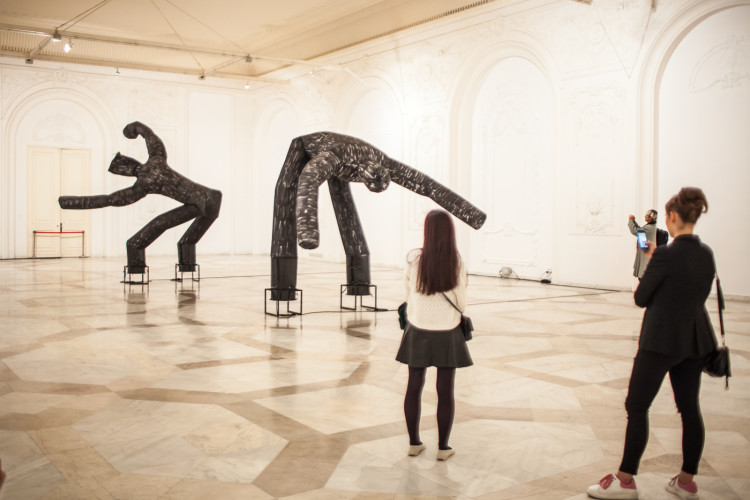
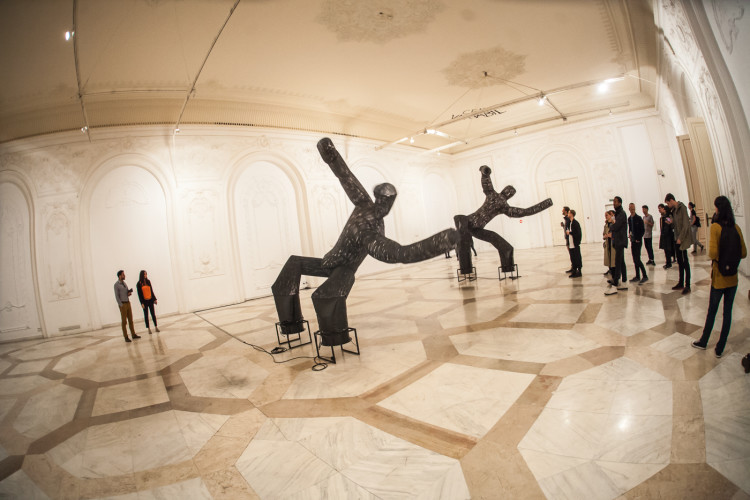
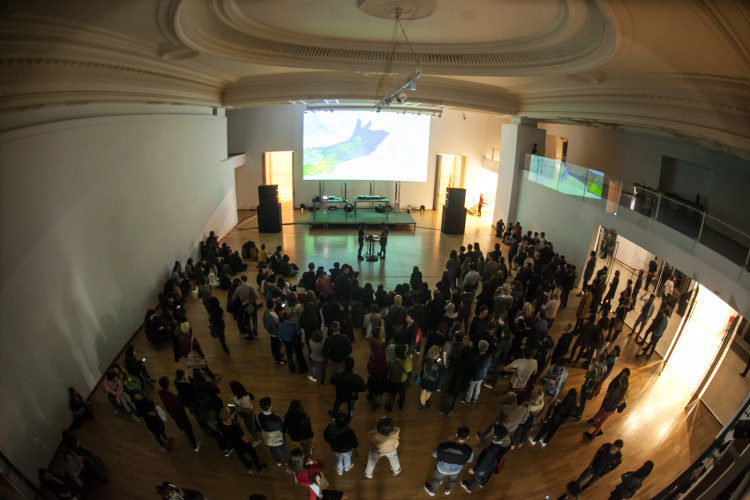
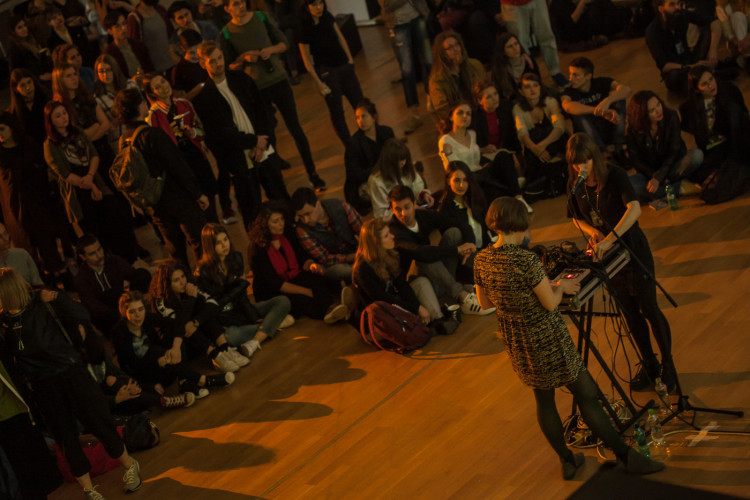
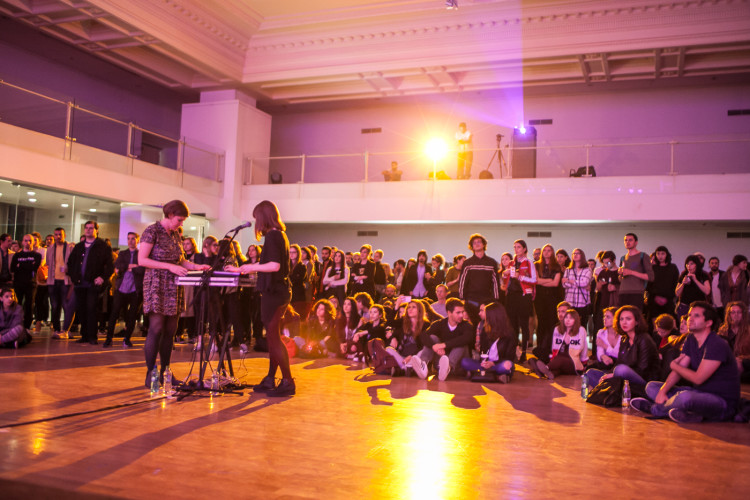
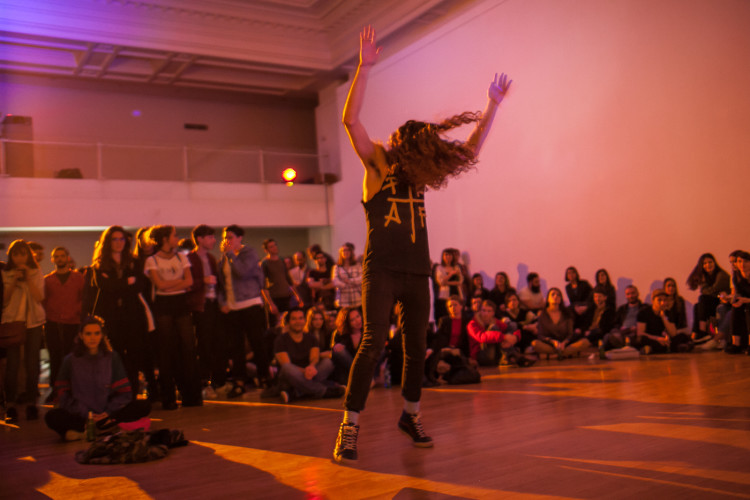
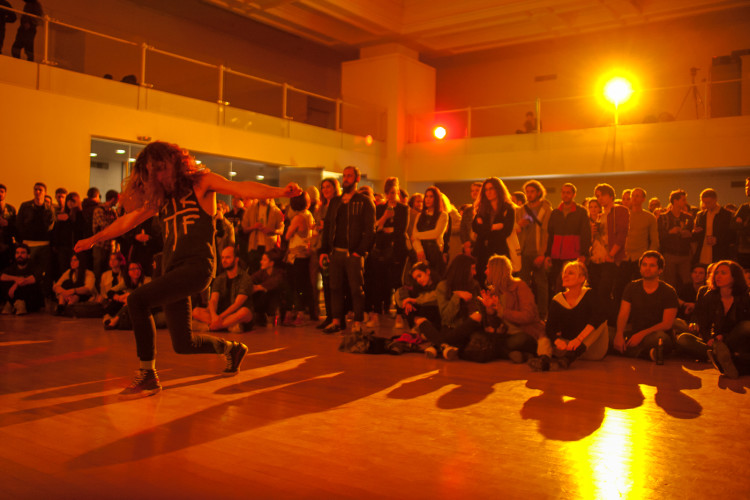
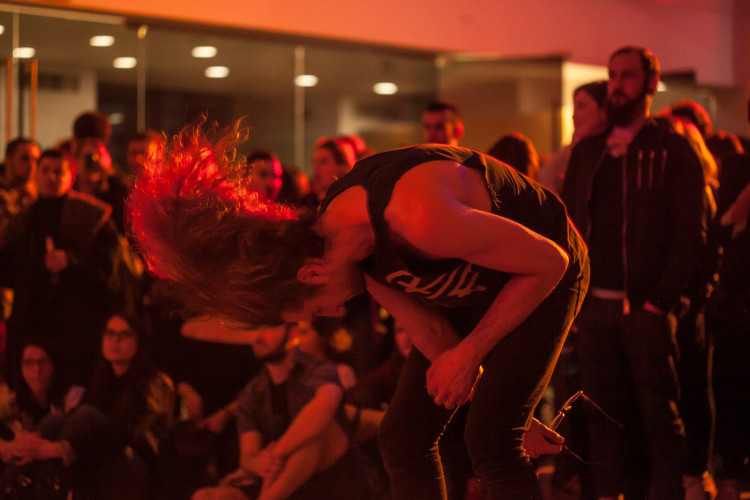
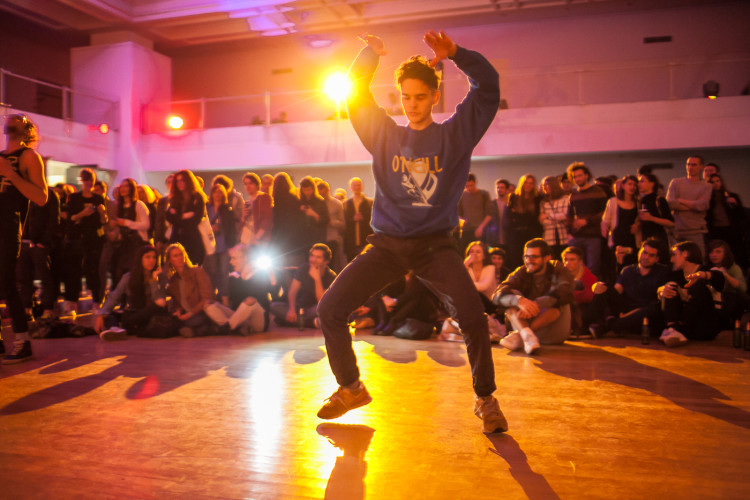
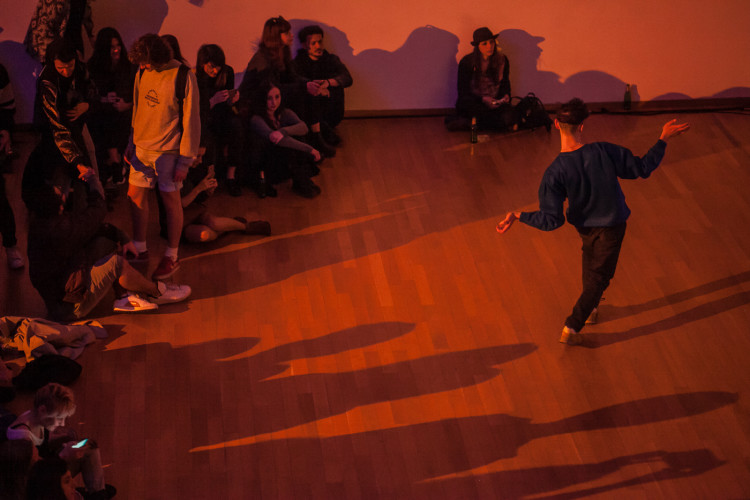
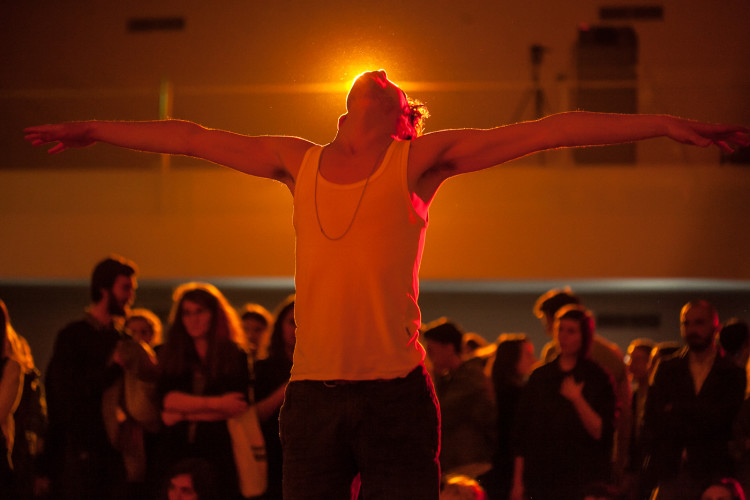
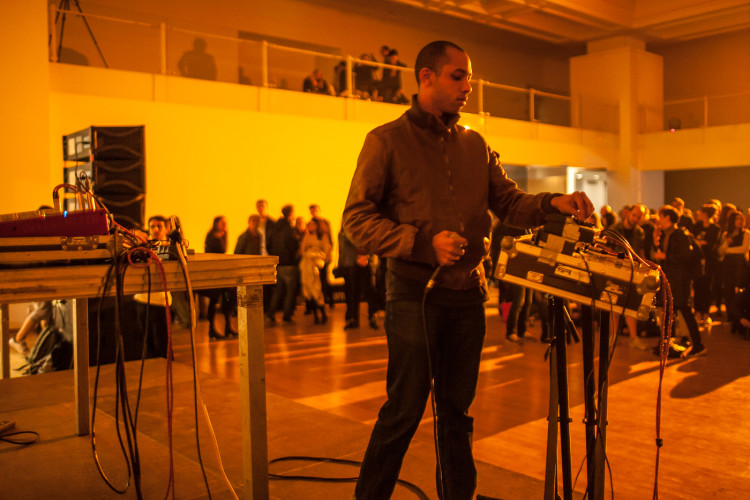
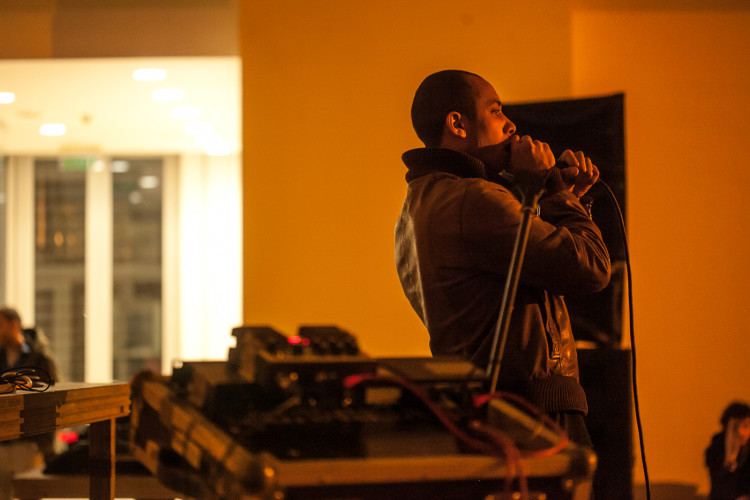

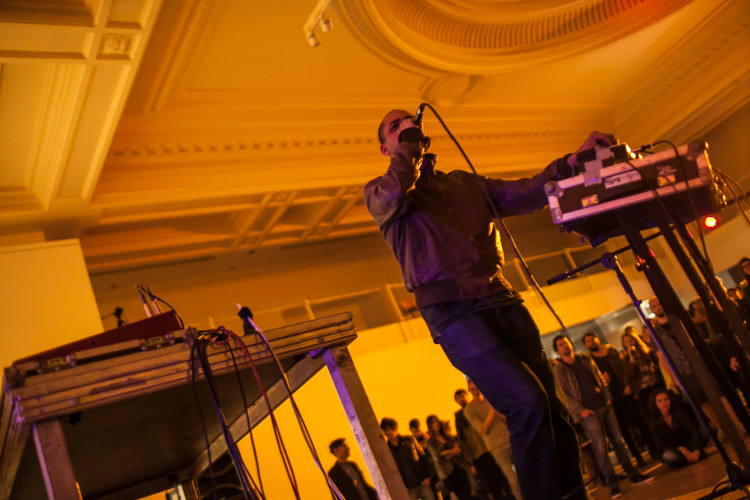
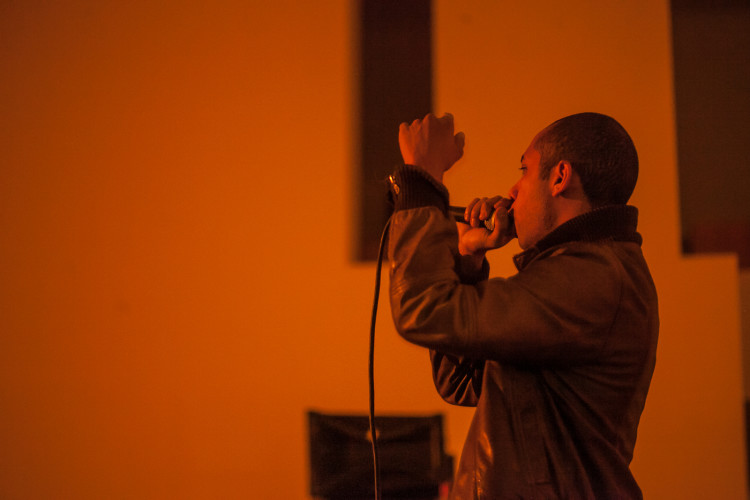
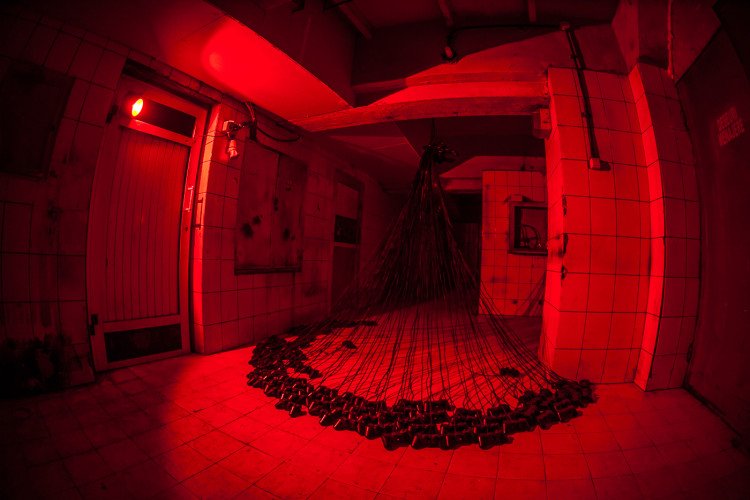
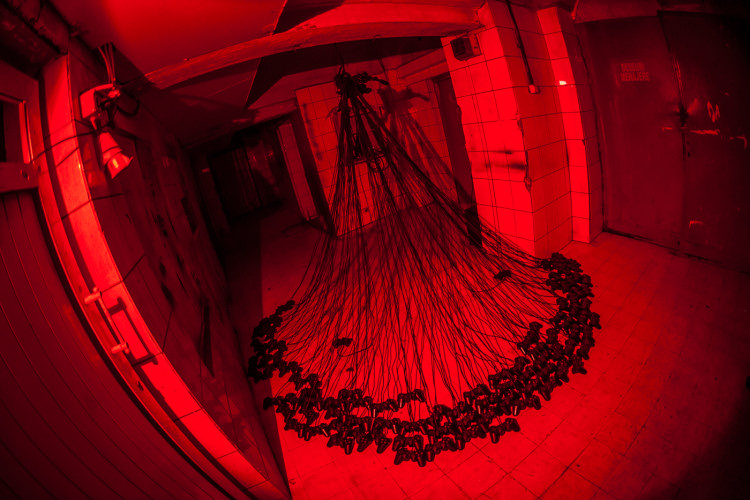
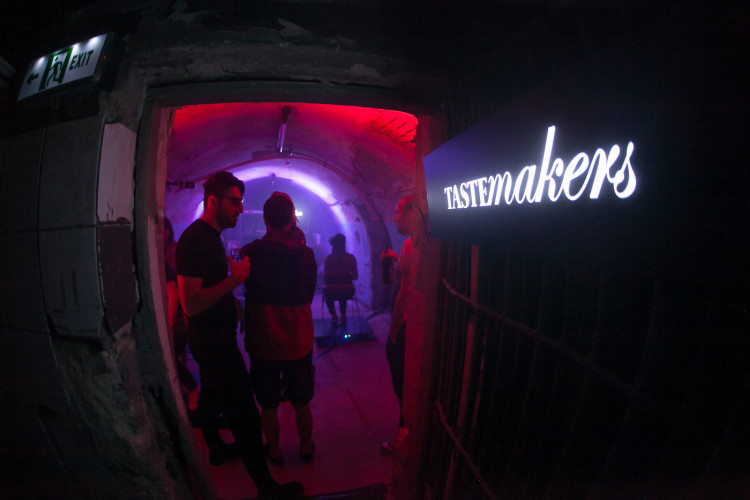
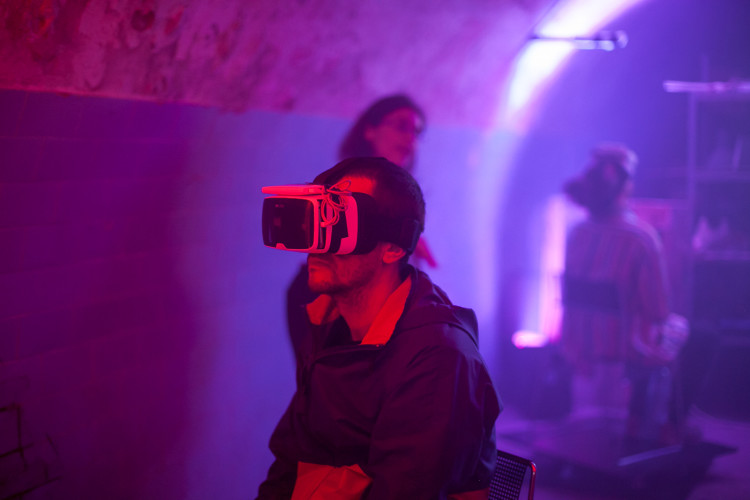
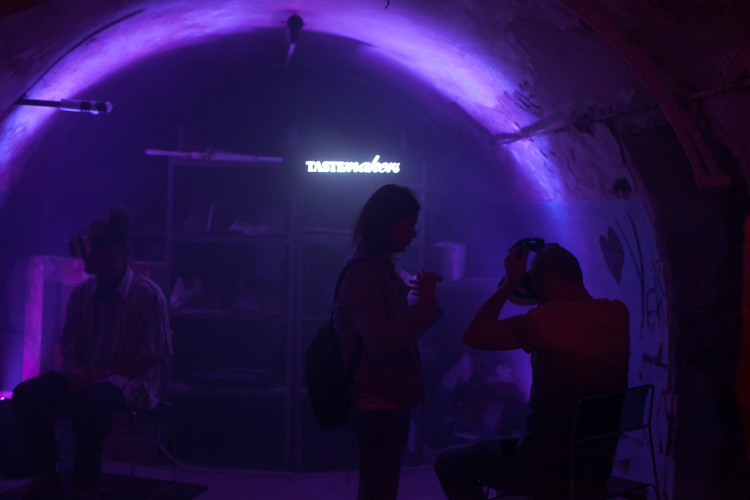
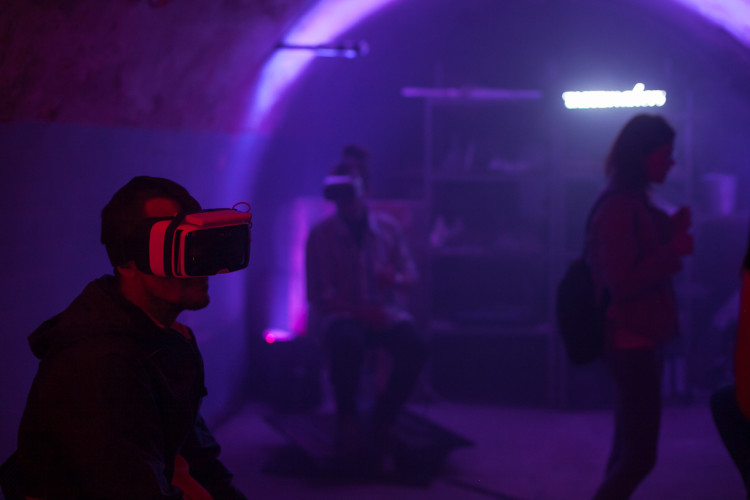
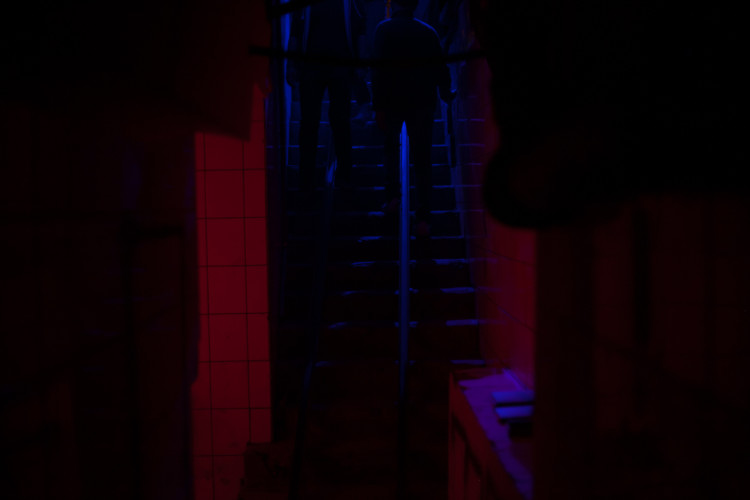
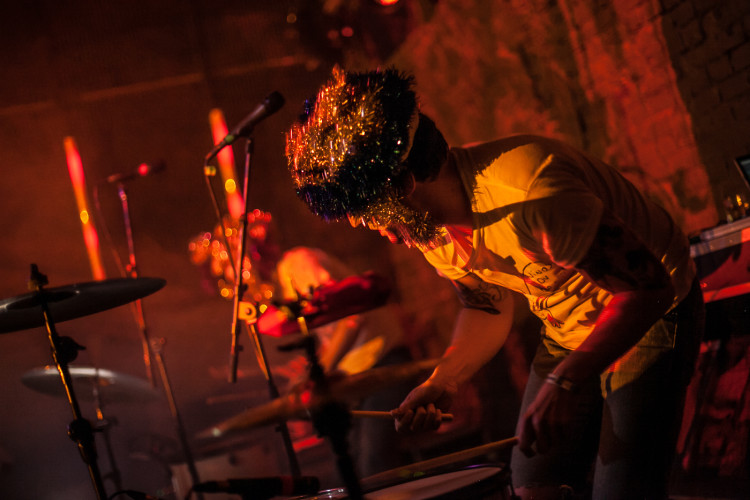
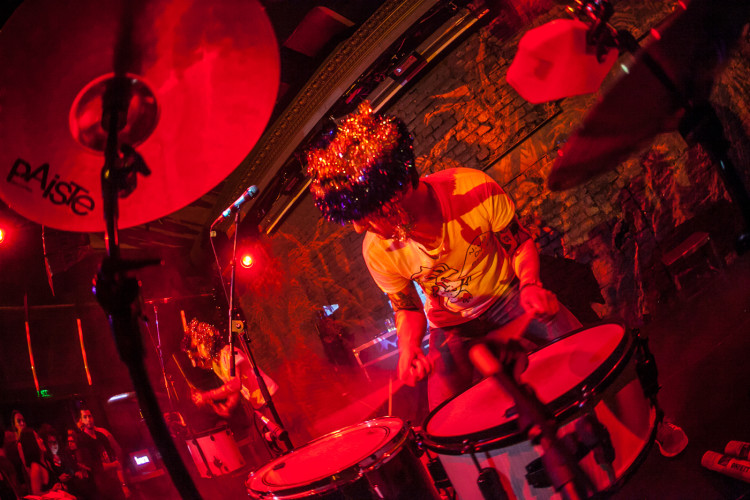
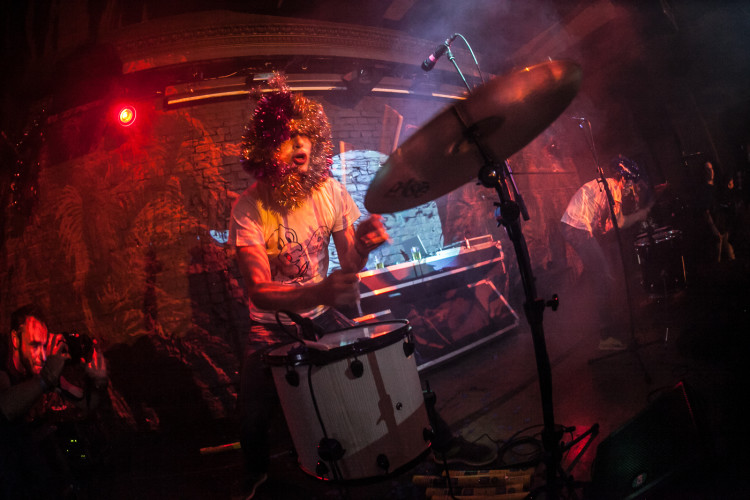
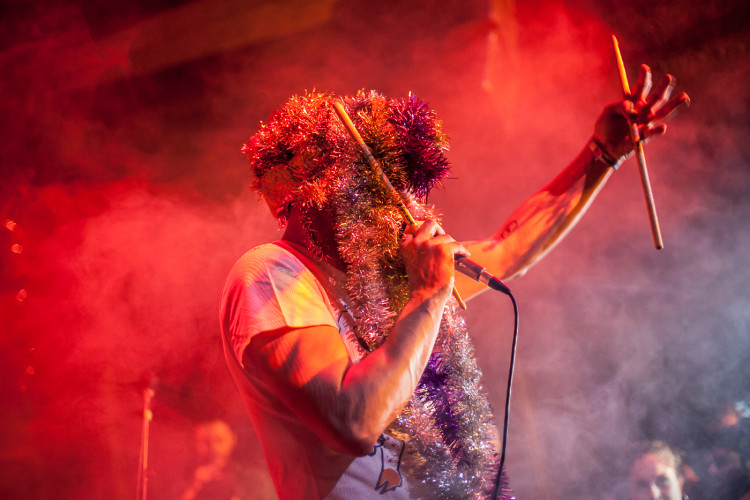
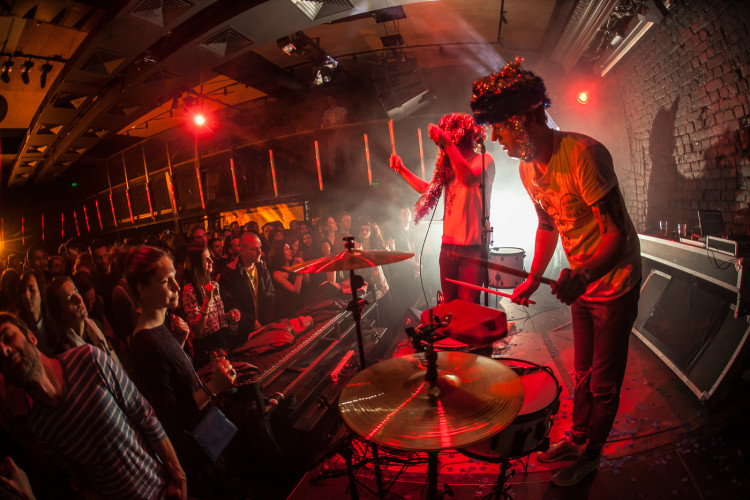
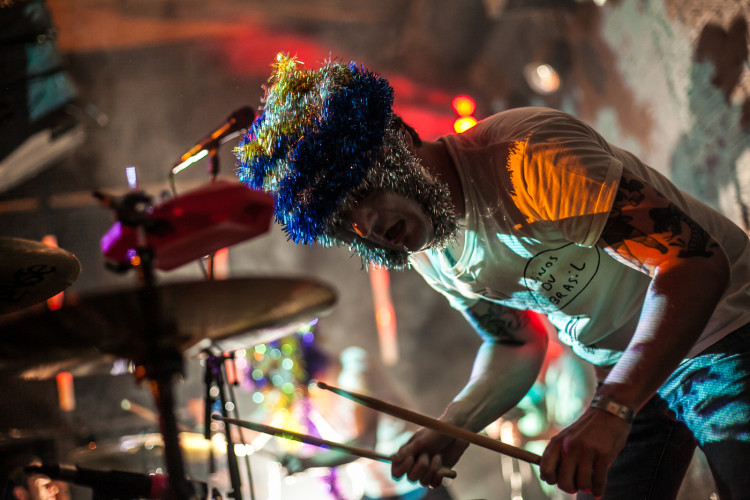
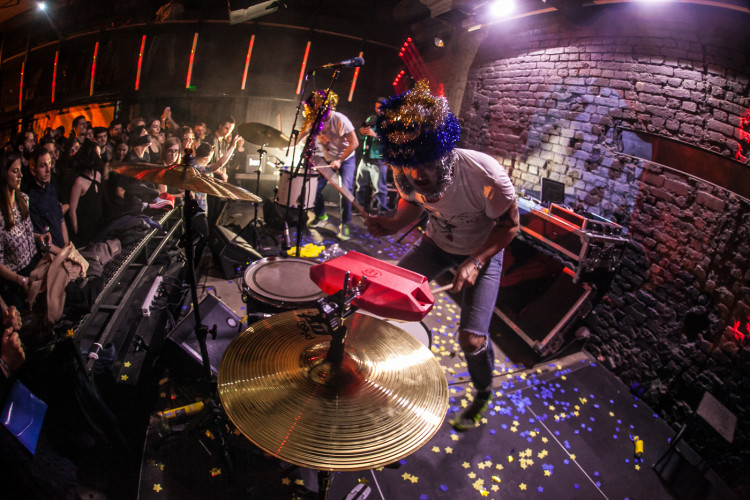
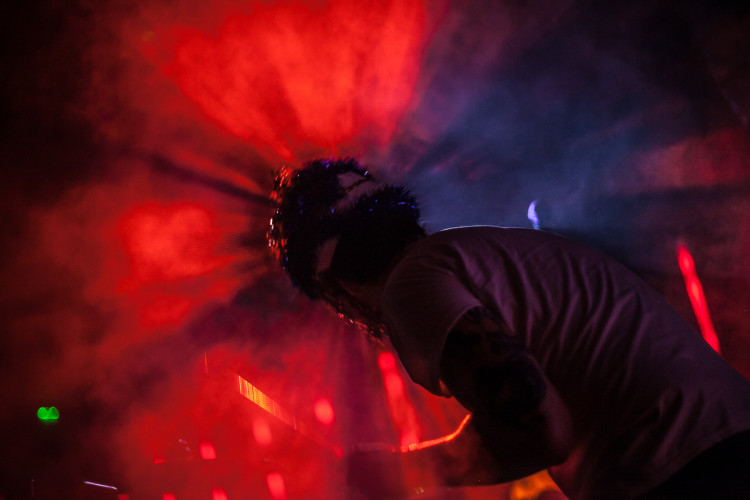
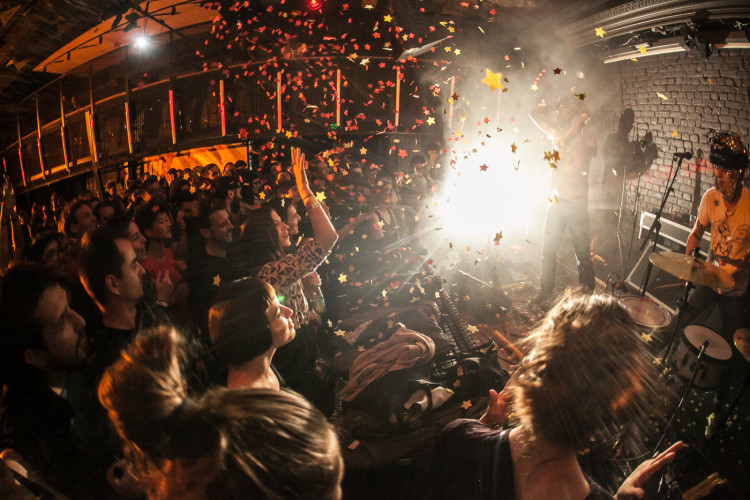
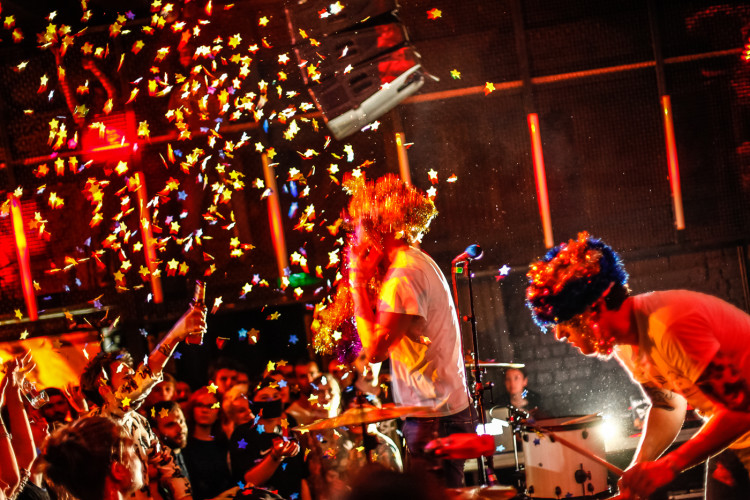
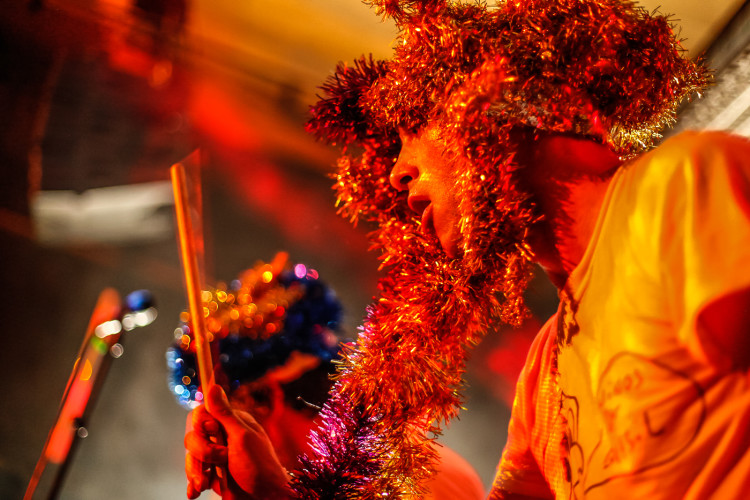
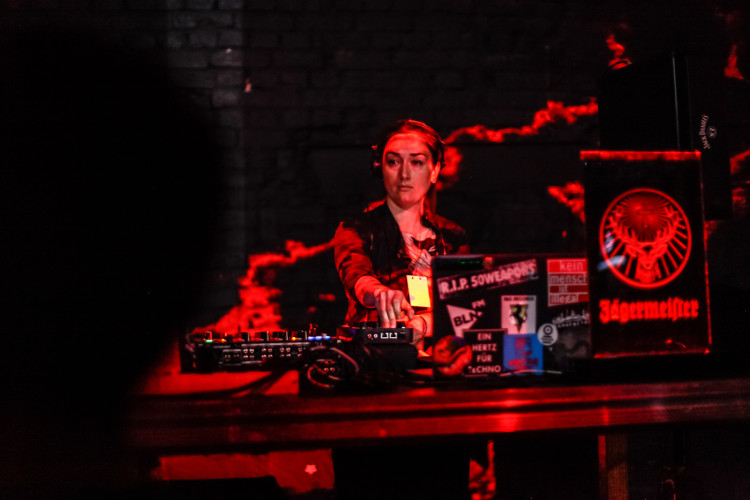
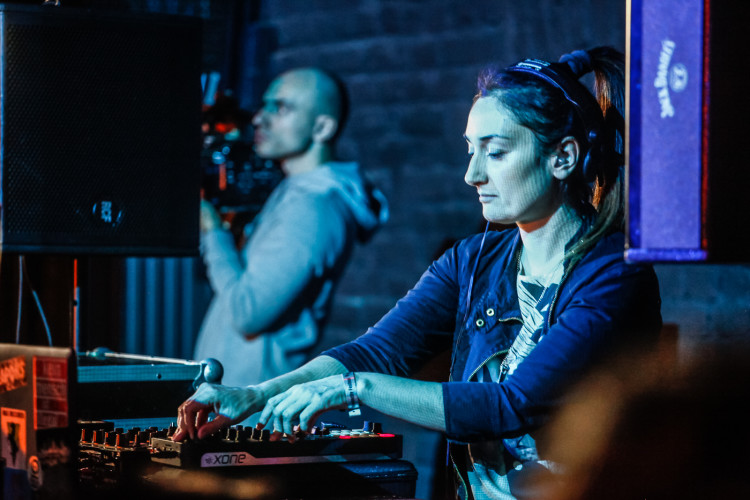

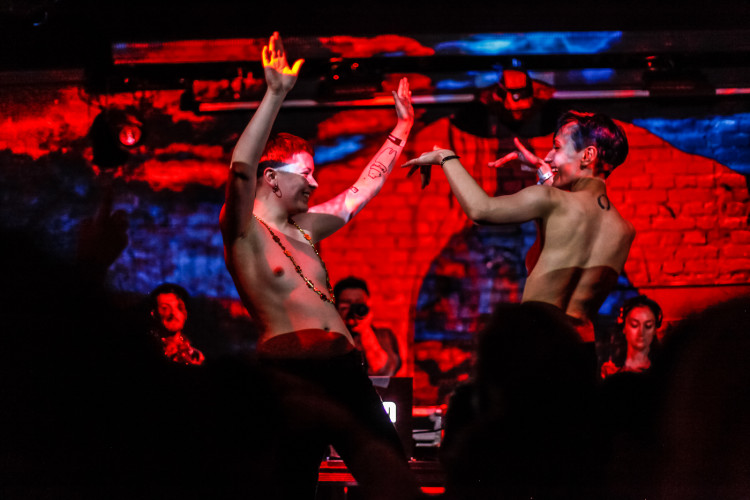
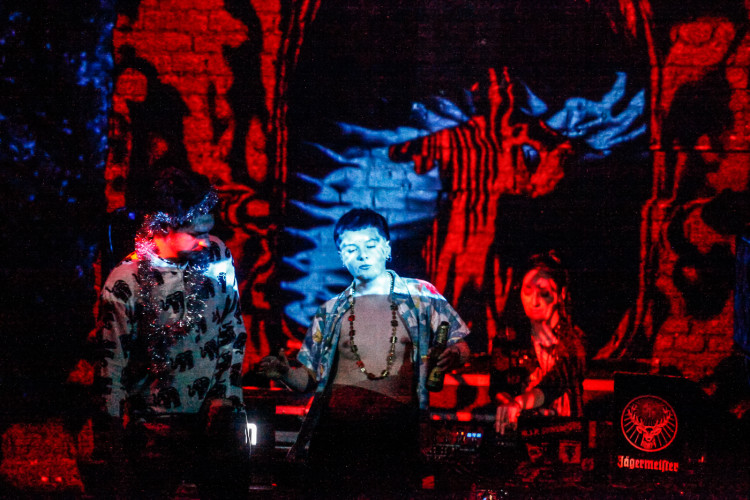
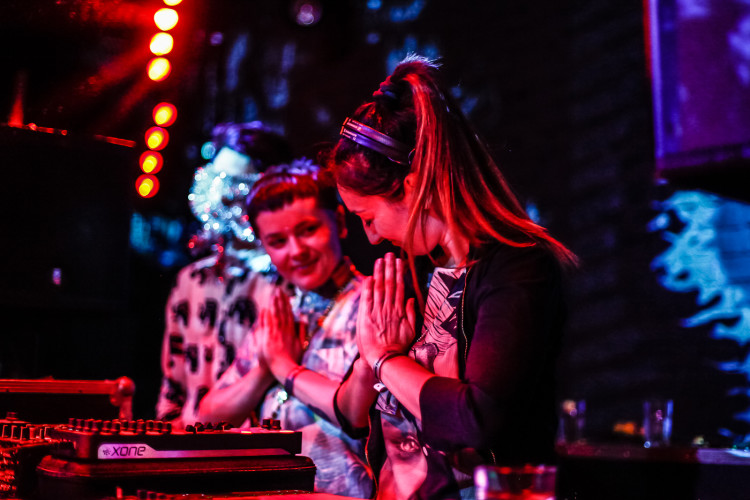
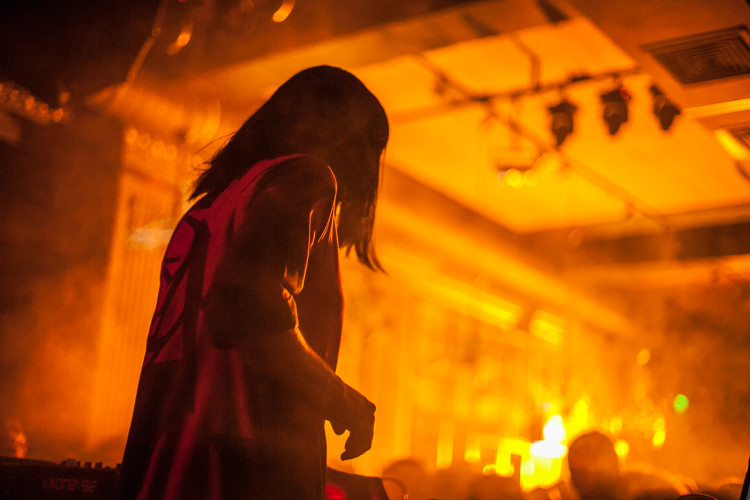
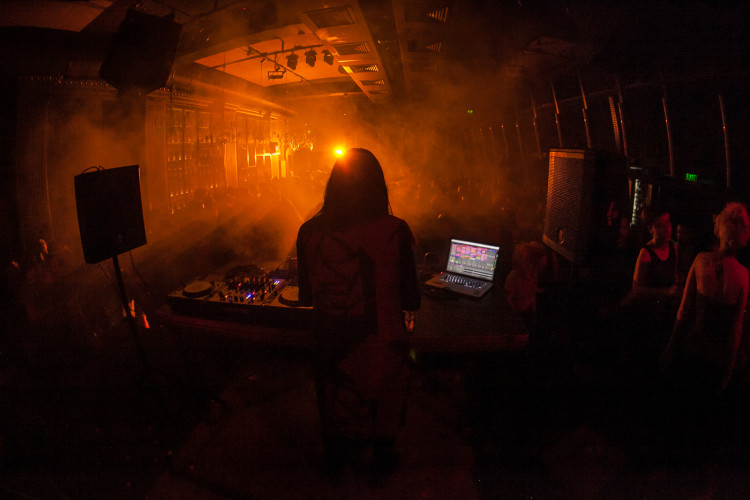
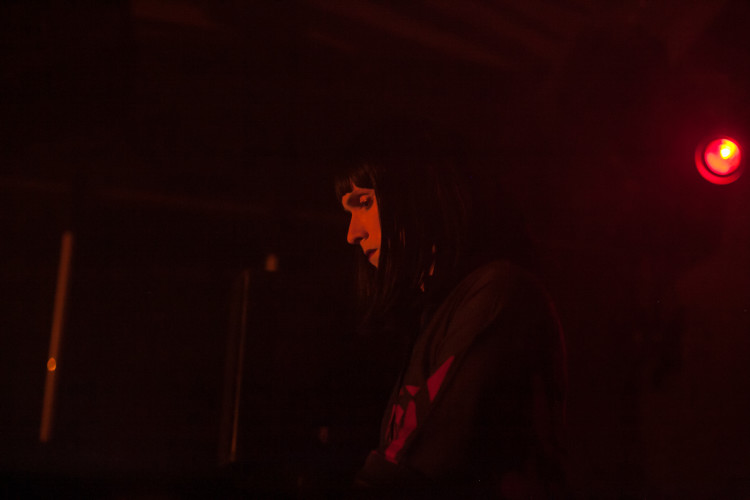
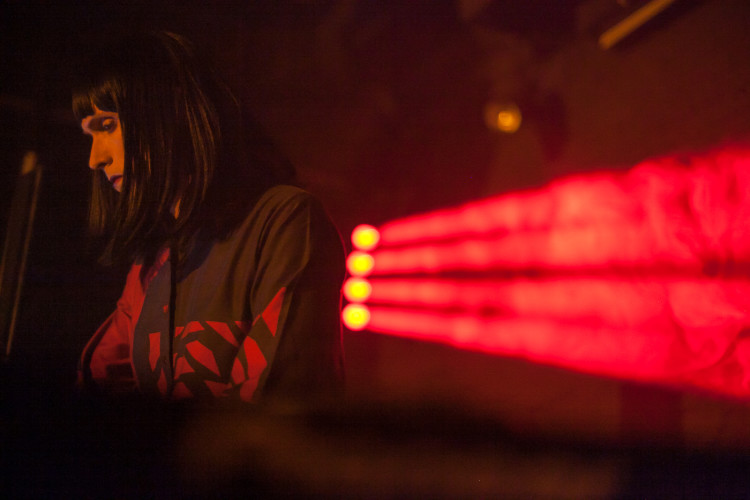
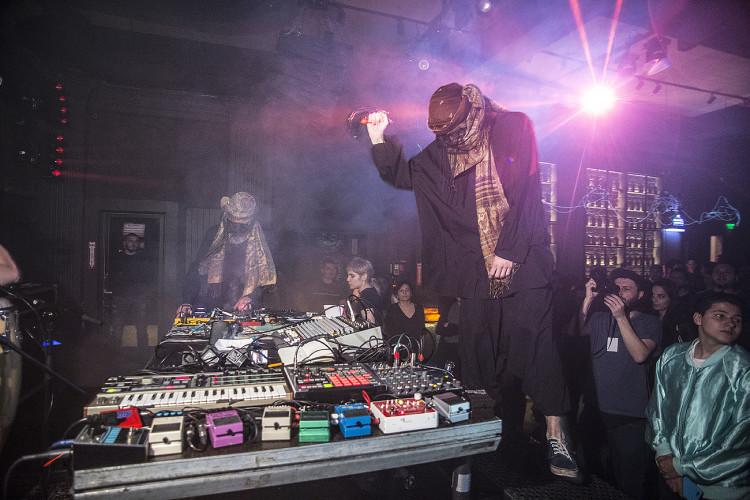
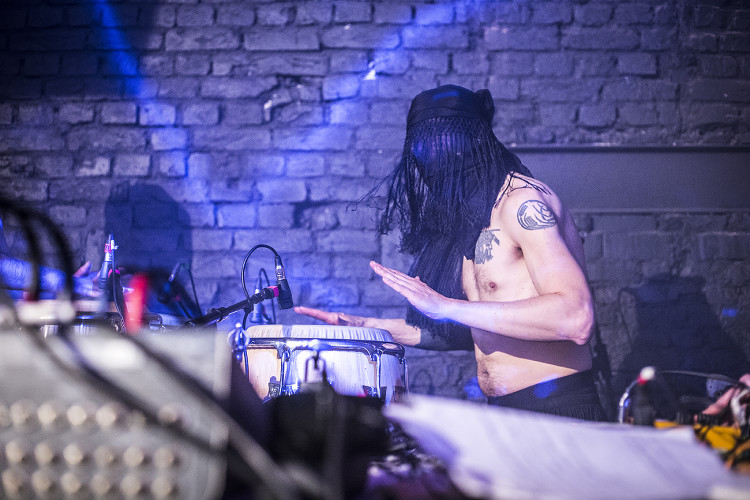
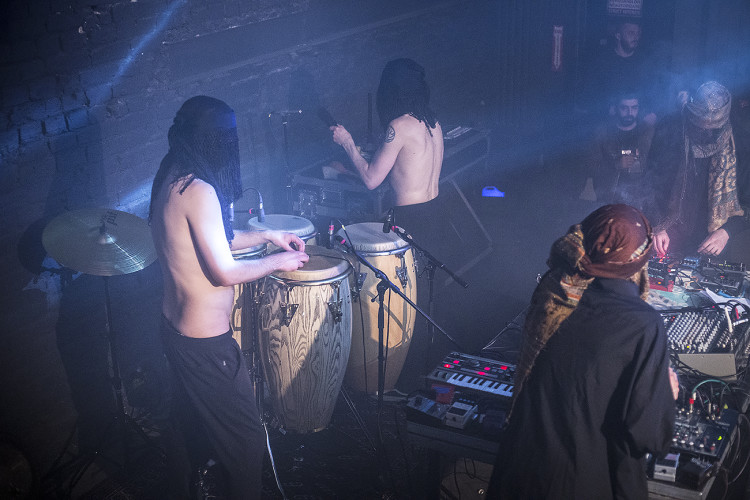
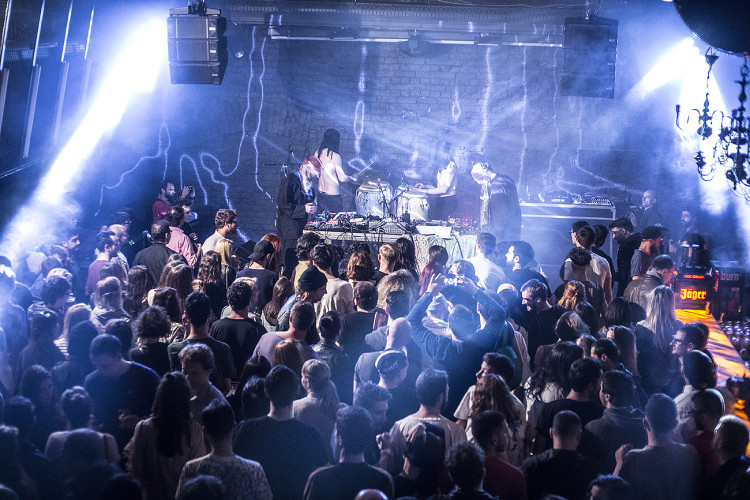
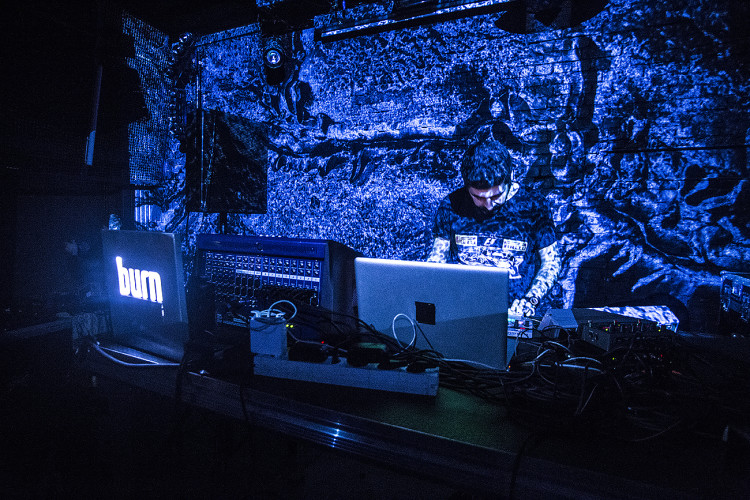
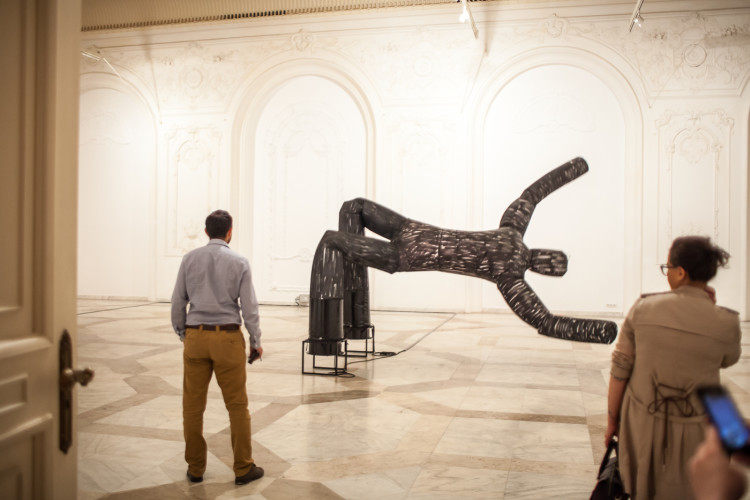
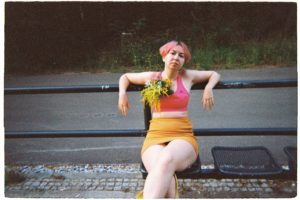
1 Comment
I wonder why does nobody talk about Perc’s performance. He killed it at Rokolectiv with straight-forwardness and simplicity, enabling a needed outpouring of frustration that anyone living in a city needs from time to time. He was brutal. Maybe too brutal for Bucharest? I really don’t get how you can live in a city of cement and only go to “minimal effort” parties amongst palm trees…